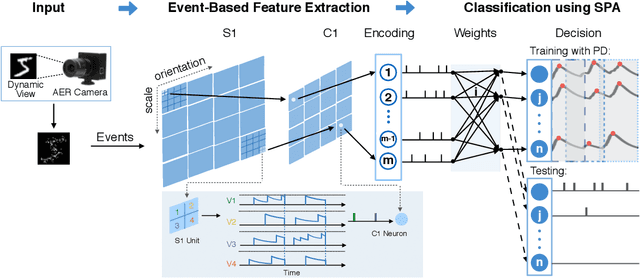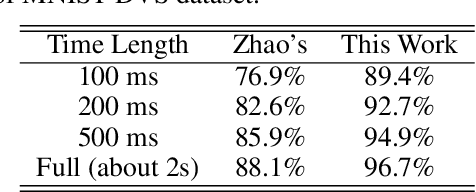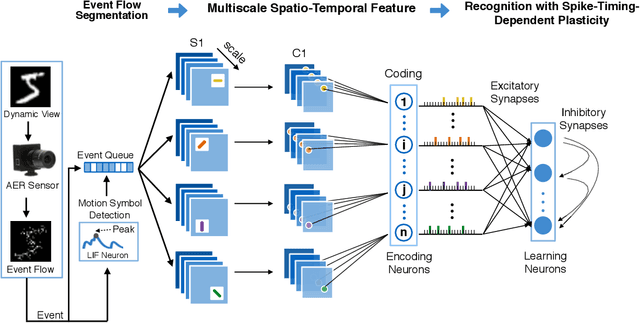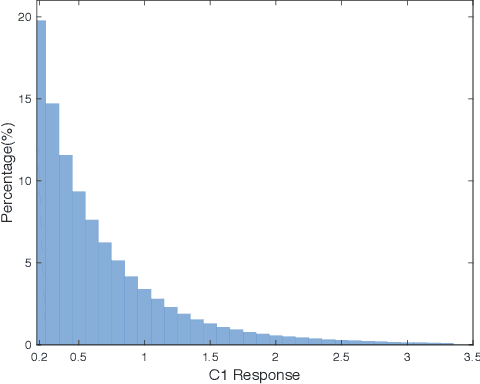Haibo Ruan
Effective AER Object Classification Using Segmented Probability-Maximization Learning in Spiking Neural Networks
Feb 14, 2020



Abstract:Address event representation (AER) cameras have recently attracted more attention due to the advantages of high temporal resolution and low power consumption, compared with traditional frame-based cameras. Since AER cameras record the visual input as asynchronous discrete events, they are inherently suitable to coordinate with the spiking neural network (SNN), which is biologically plausible and energy-efficient on neuromorphic hardware. However, using SNN to perform the AER object classification is still challenging, due to the lack of effective learning algorithms for this new representation. To tackle this issue, we propose an AER object classification model using a novel segmented probability-maximization (SPA) learning algorithm. Technically, 1) the SPA learning algorithm iteratively maximizes the probability of the classes that samples belong to, in order to improve the reliability of neuron responses and effectiveness of learning; 2) a peak detection (PD) mechanism is introduced in SPA to locate informative time points segment by segment, based on which information within the whole event stream can be fully utilized by the learning. Extensive experimental results show that, compared to state-of-the-art methods, not only our model is more effective, but also it requires less information to reach a certain level of accuracy.
Unsupervised AER Object Recognition Based on Multiscale Spatio-Temporal Features and Spiking Neurons
Nov 19, 2019



Abstract:This paper proposes an unsupervised address event representation (AER) object recognition approach. The proposed approach consists of a novel multiscale spatio-temporal feature (MuST) representation of input AER events and a spiking neural network (SNN) using spike-timing-dependent plasticity (STDP) for object recognition with MuST. MuST extracts the features contained in both the spatial and temporal information of AER event flow, and meanwhile forms an informative and compact feature spike representation. We show not only how MuST exploits spikes to convey information more effectively, but also how it benefits the recognition using SNN. The recognition process is performed in an unsupervised manner, which does not need to specify the desired status of every single neuron of SNN, and thus can be flexibly applied in real-world recognition tasks. The experiments are performed on five AER datasets including a new one named GESTURE-DVS. Extensive experimental results show the effectiveness and advantages of this proposed approach.
 Add to Chrome
Add to Chrome Add to Firefox
Add to Firefox Add to Edge
Add to Edge